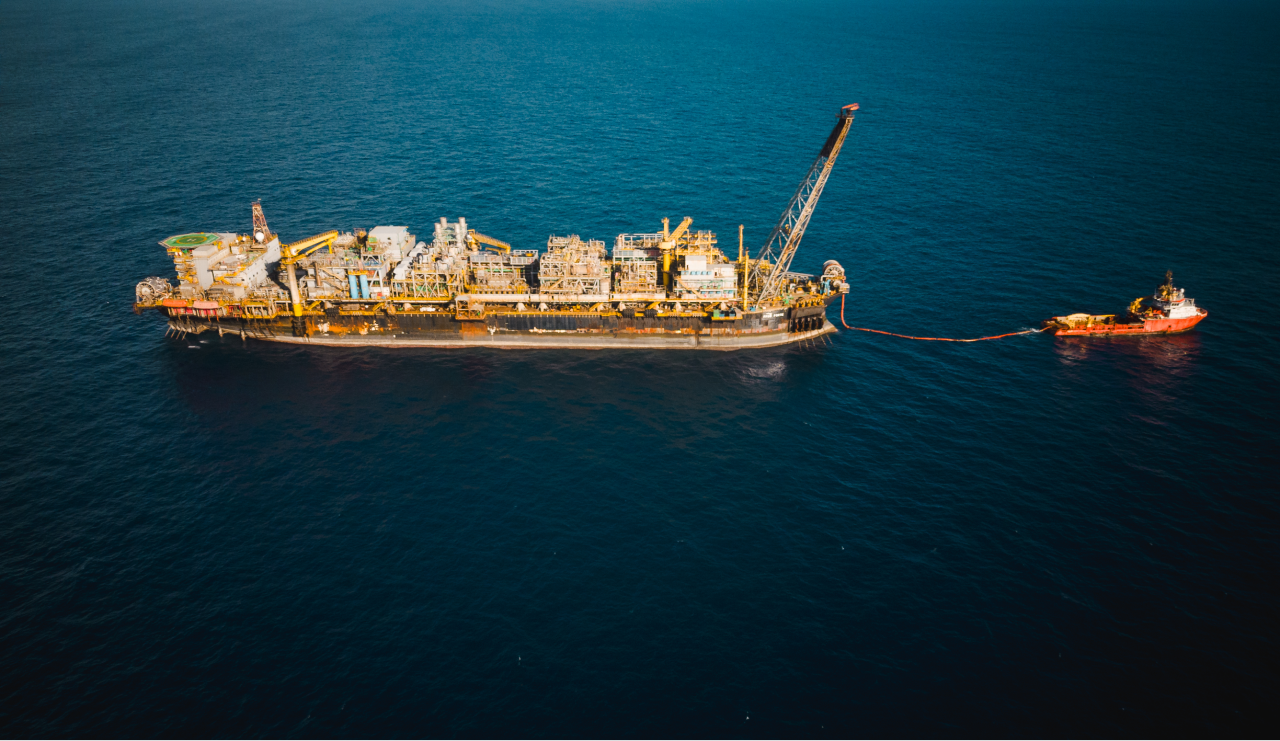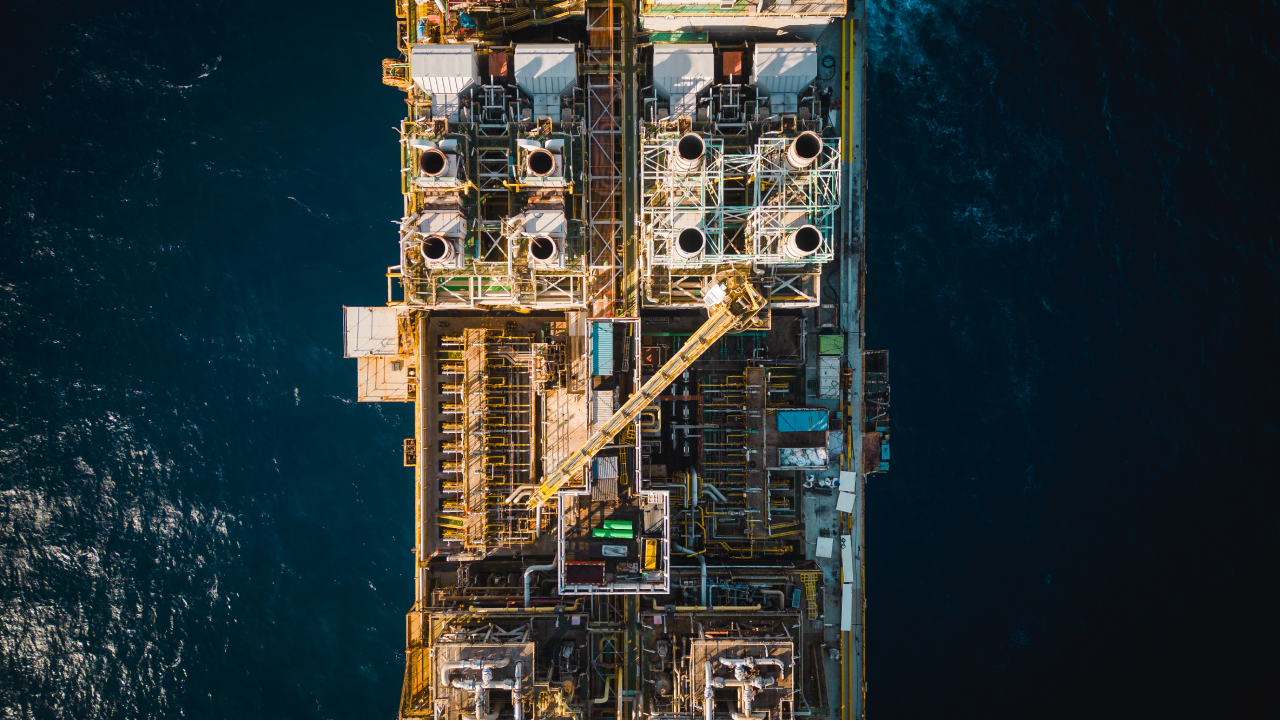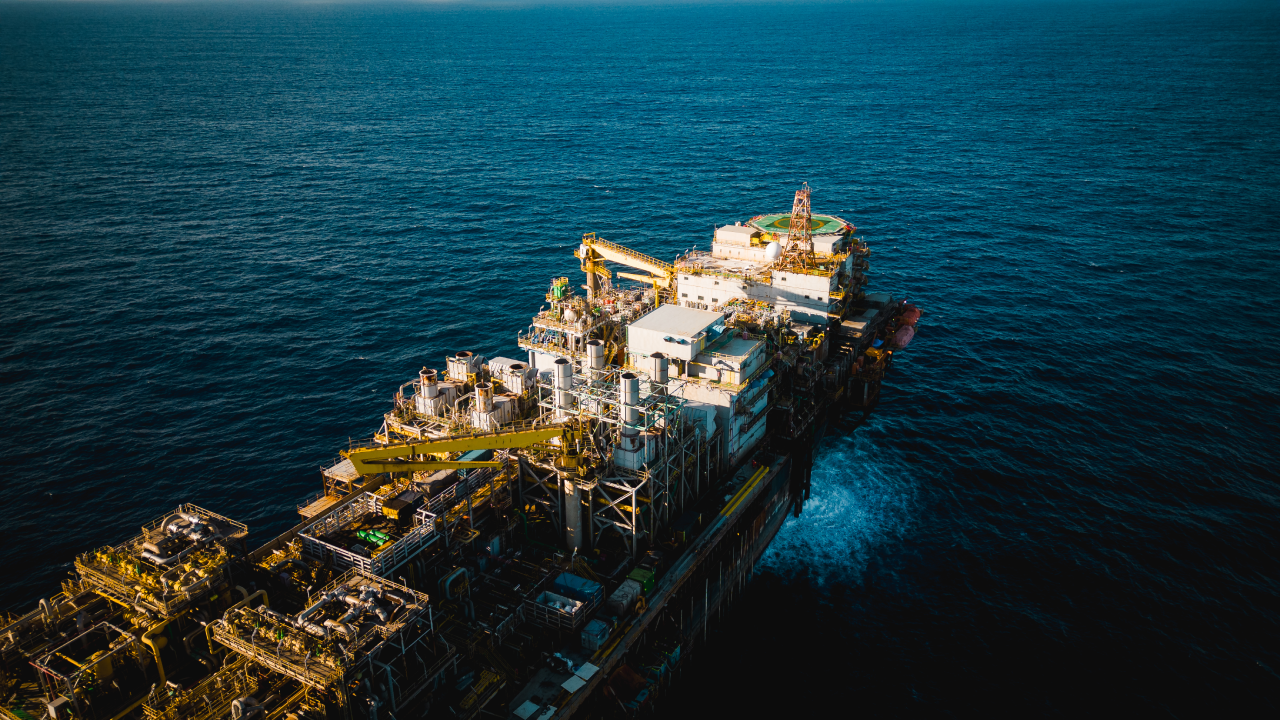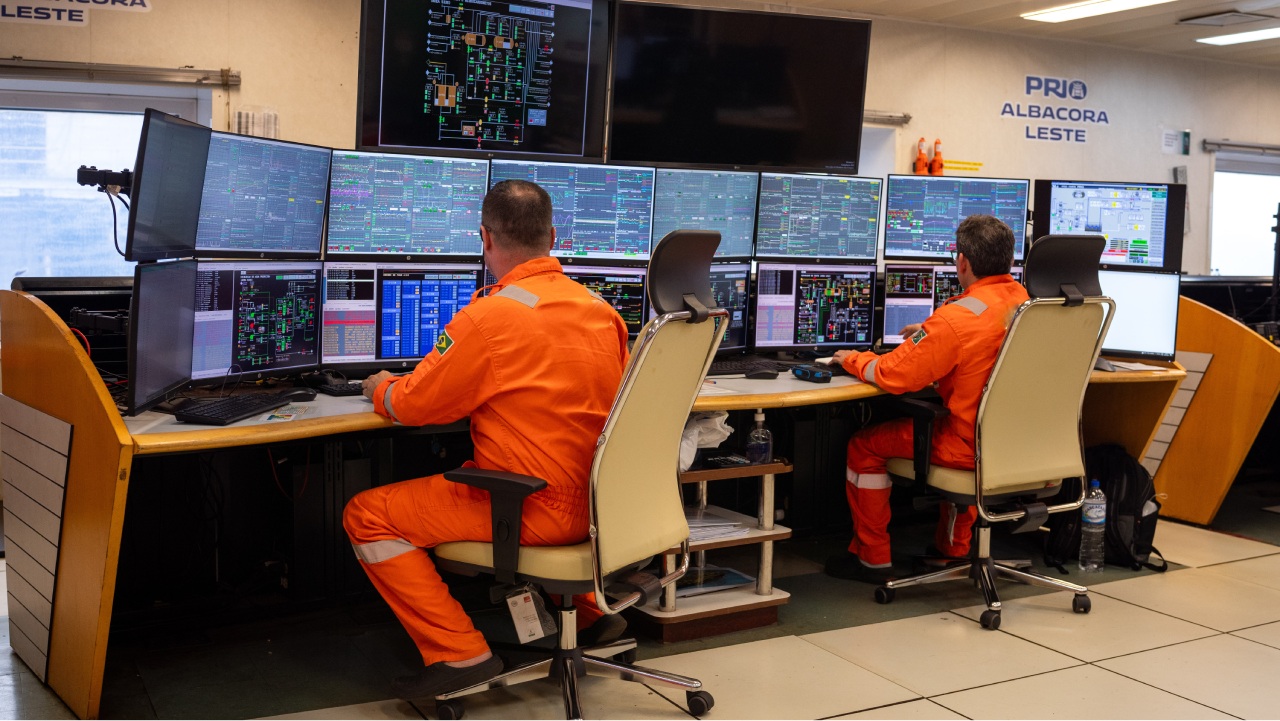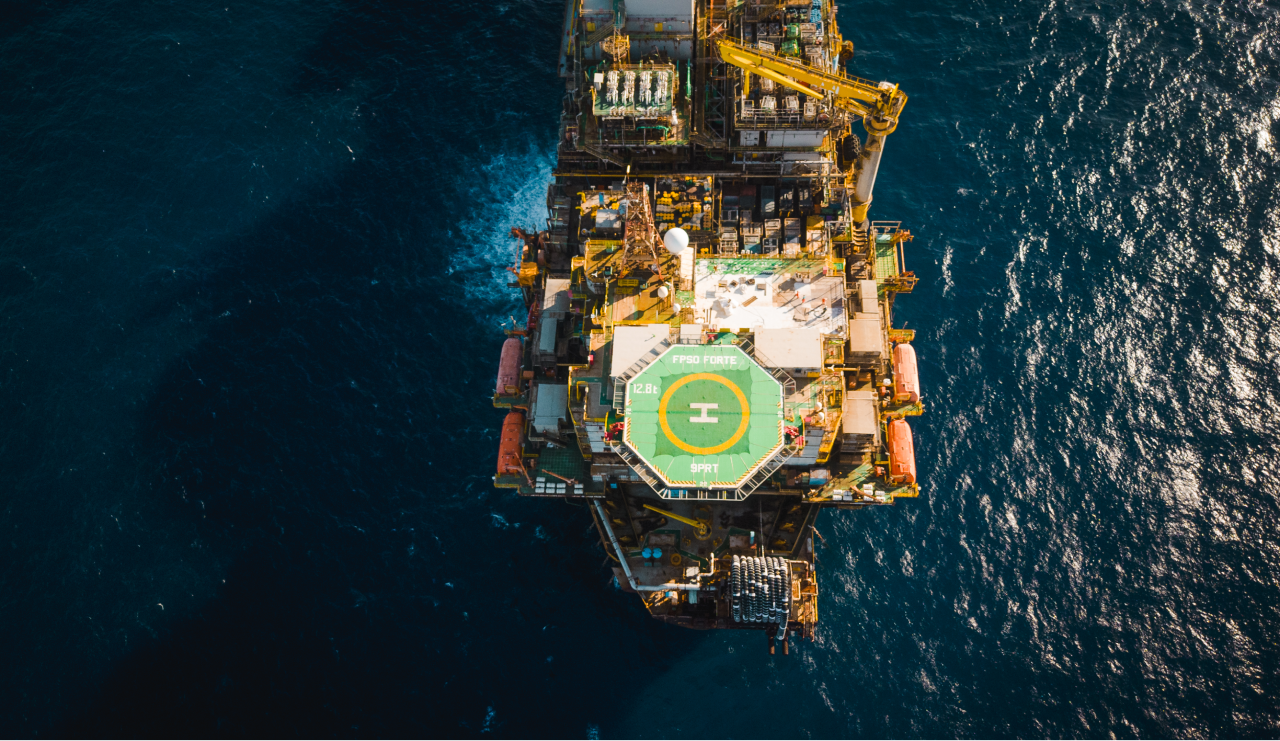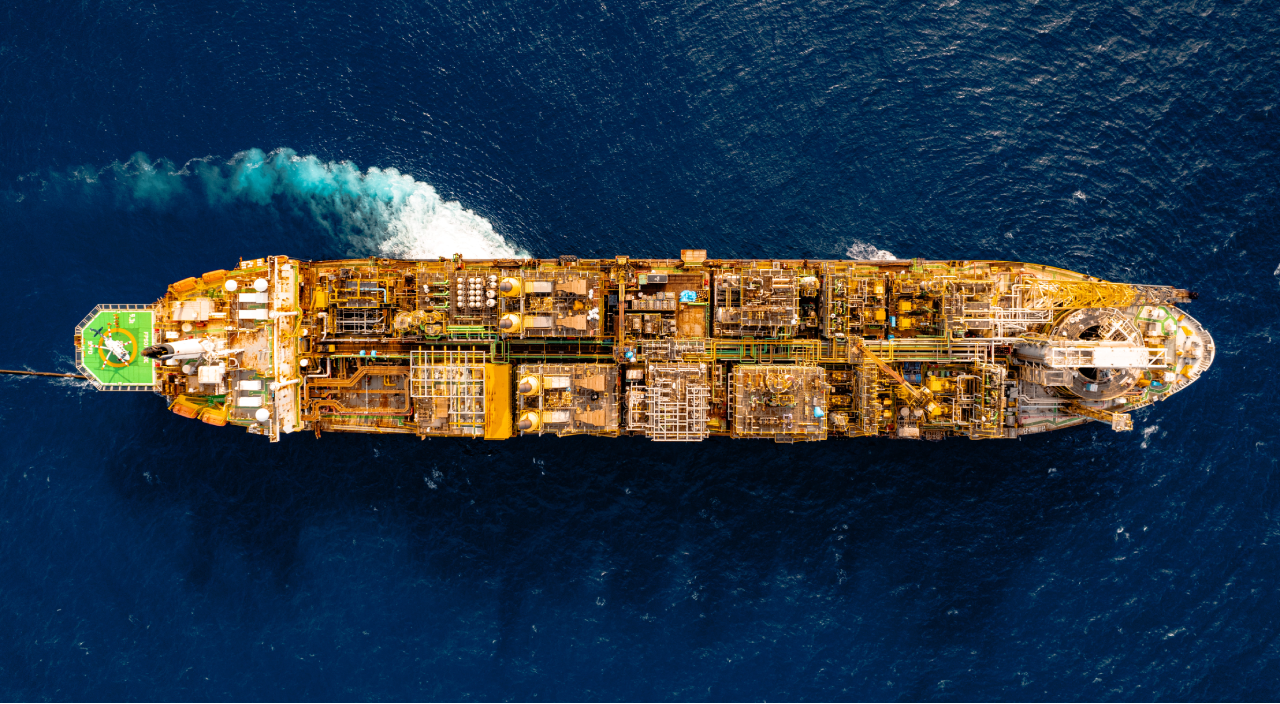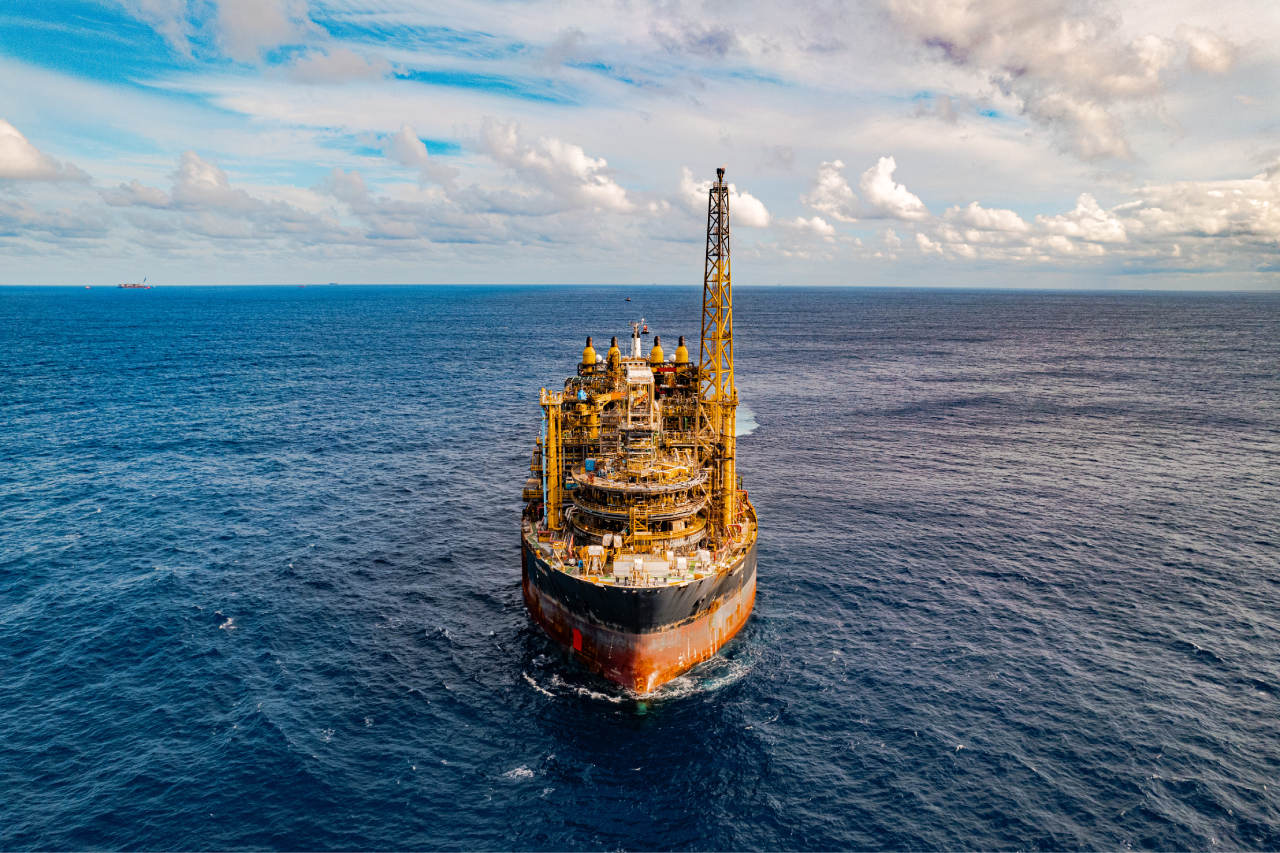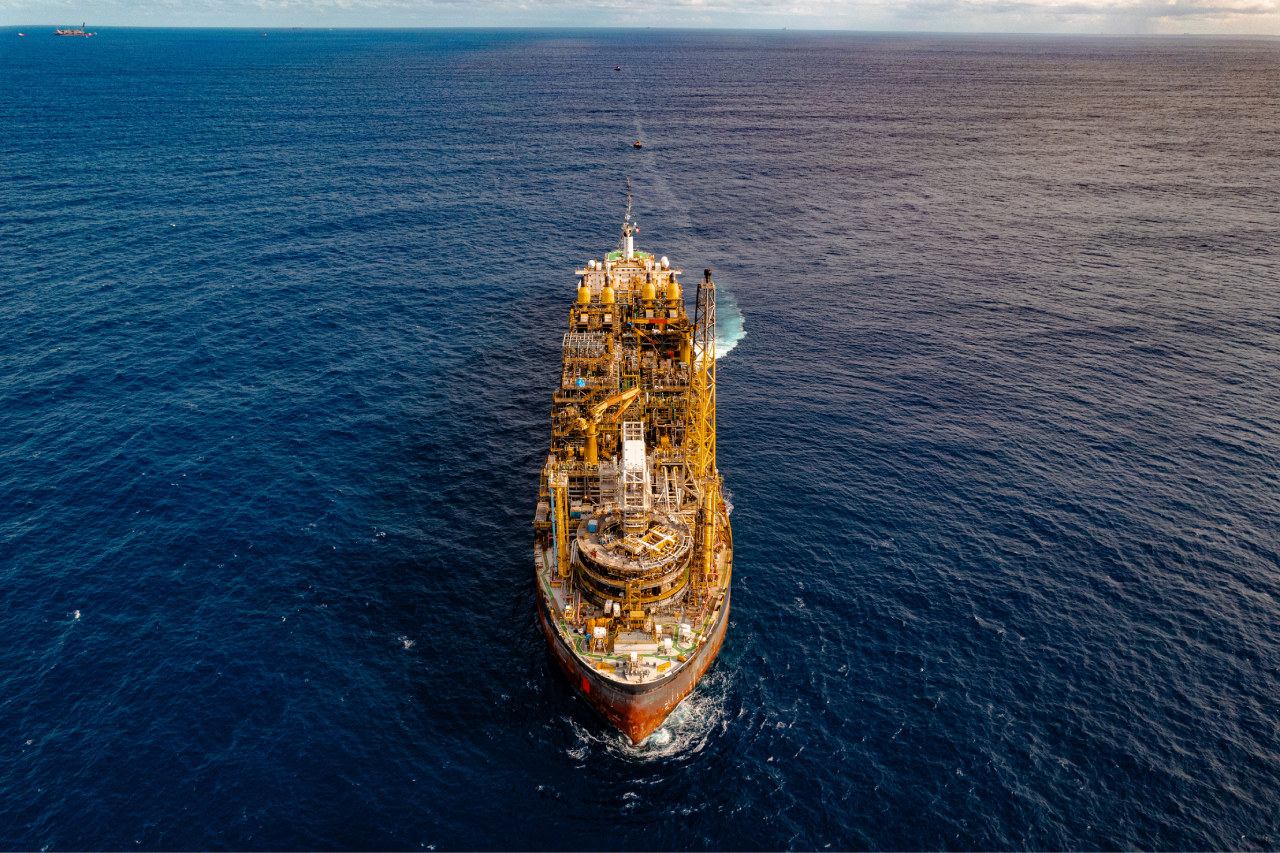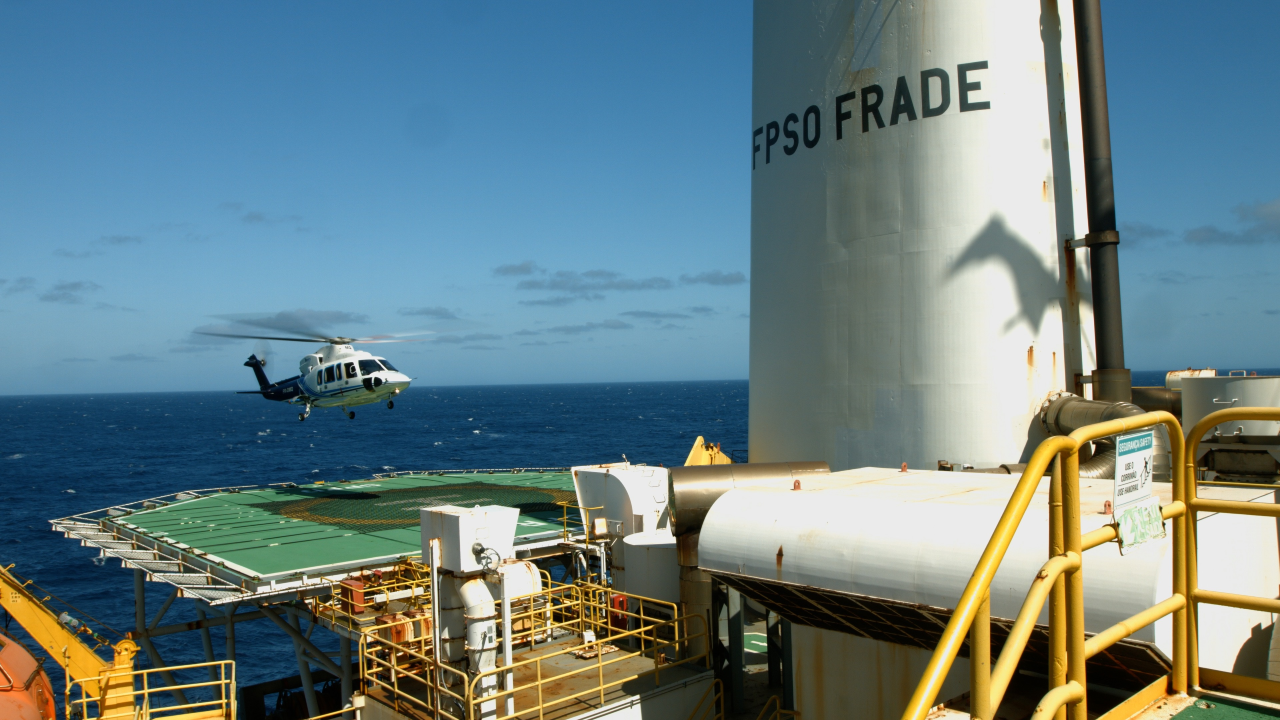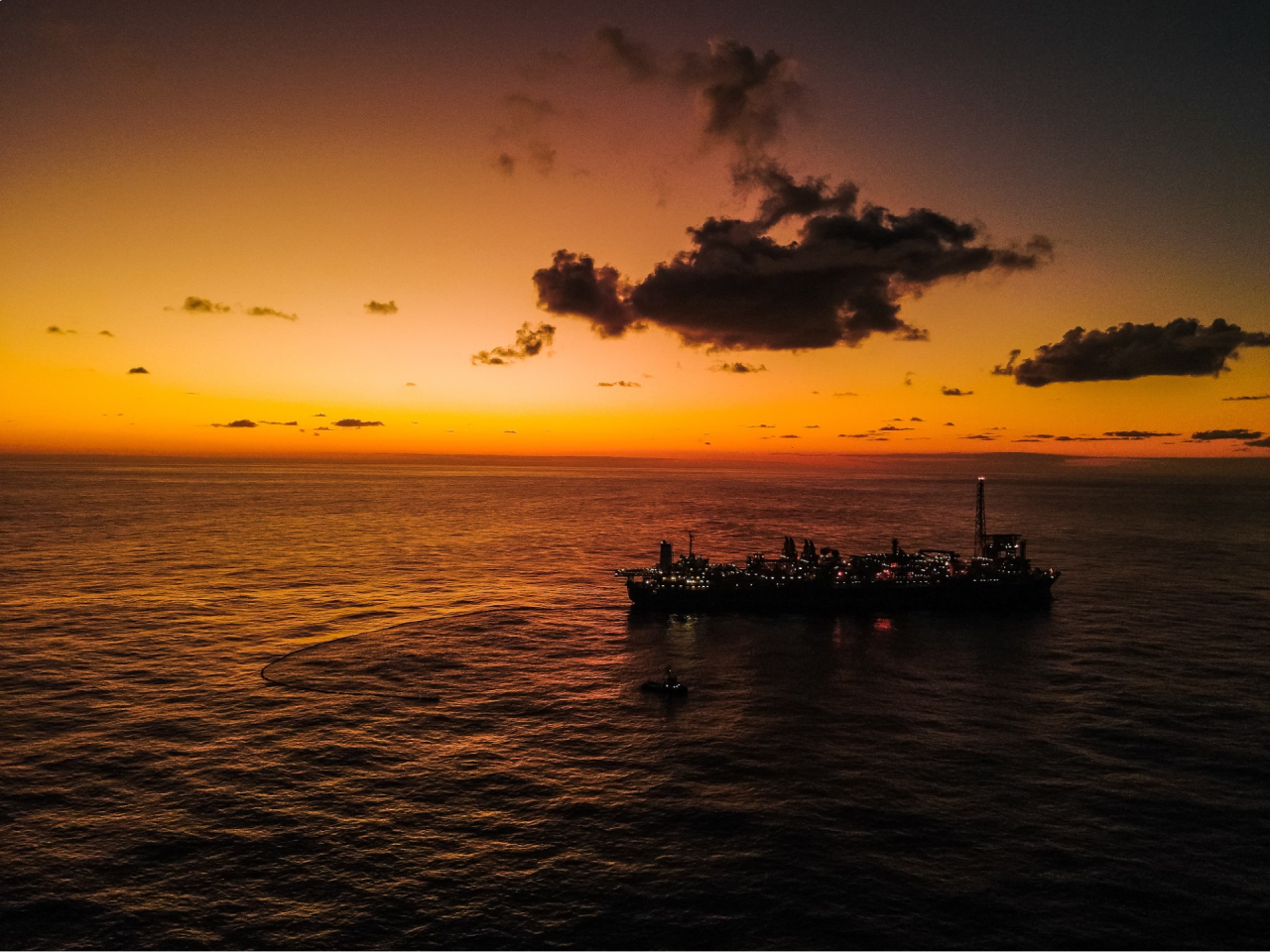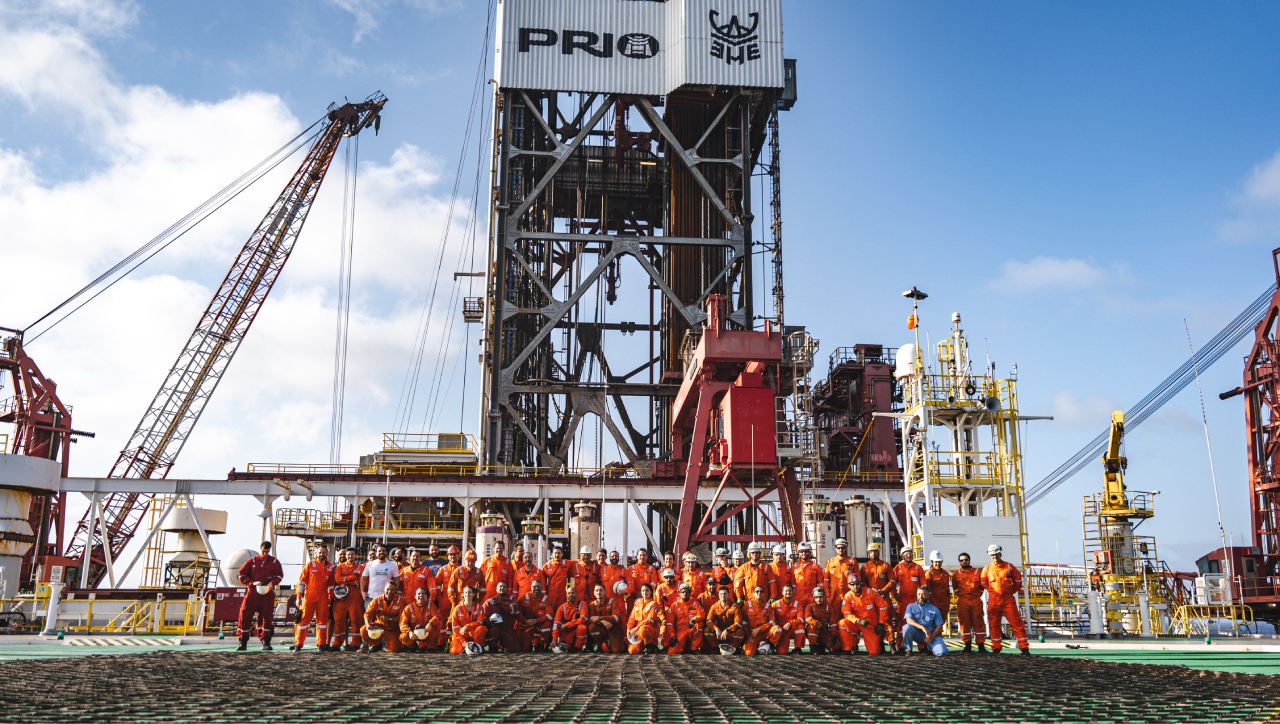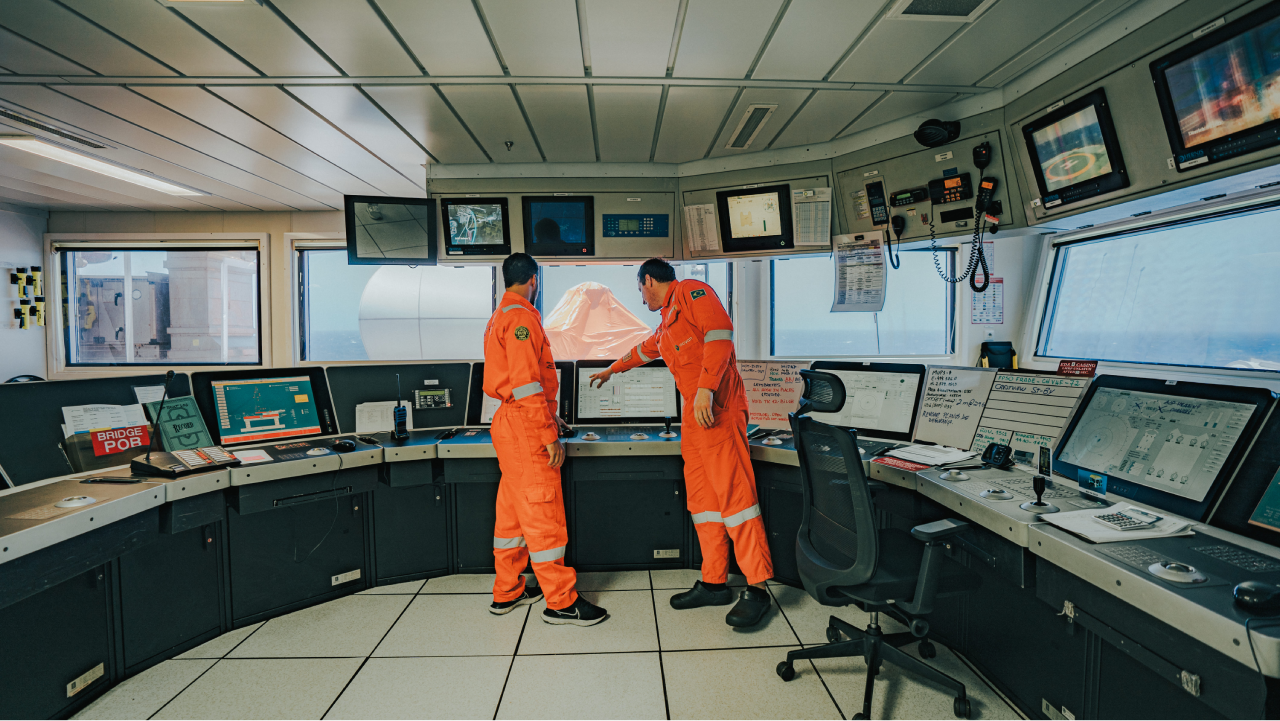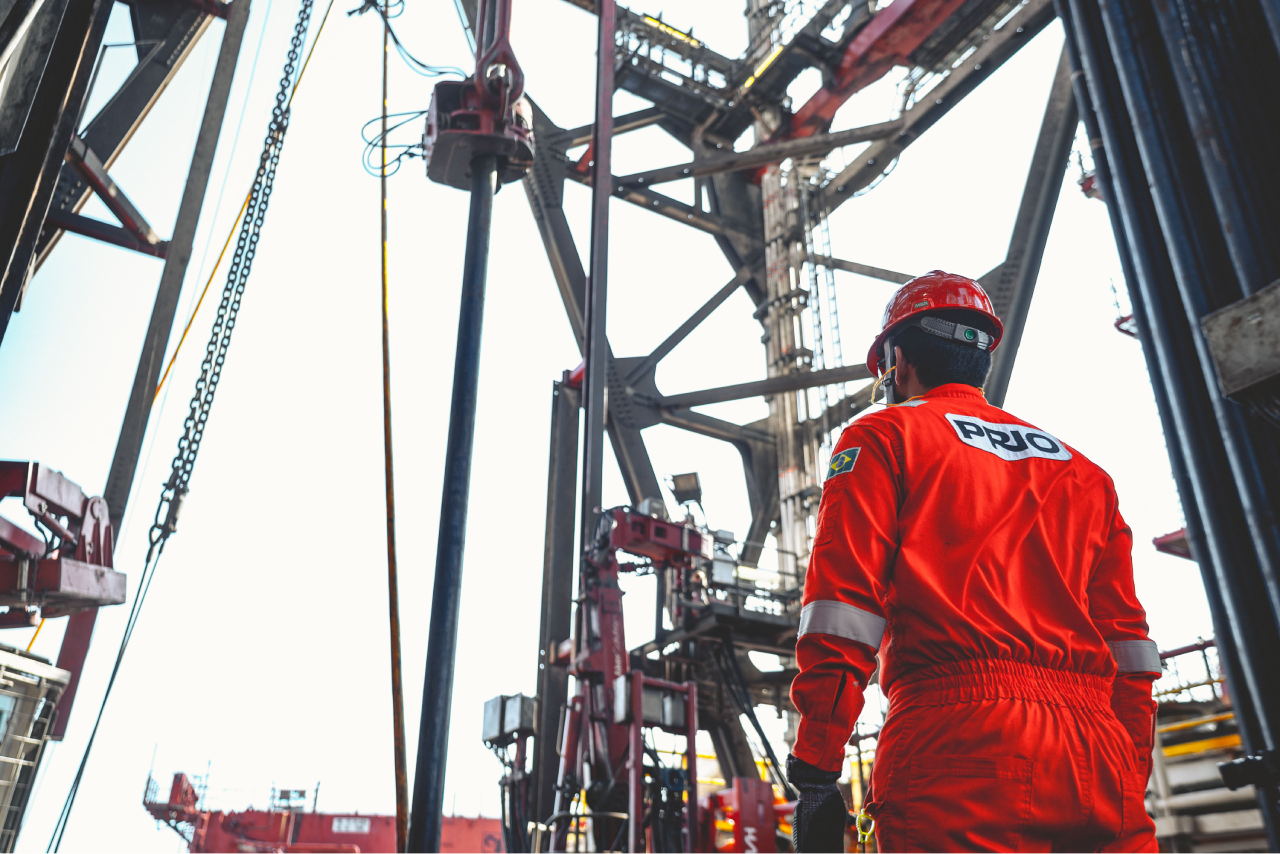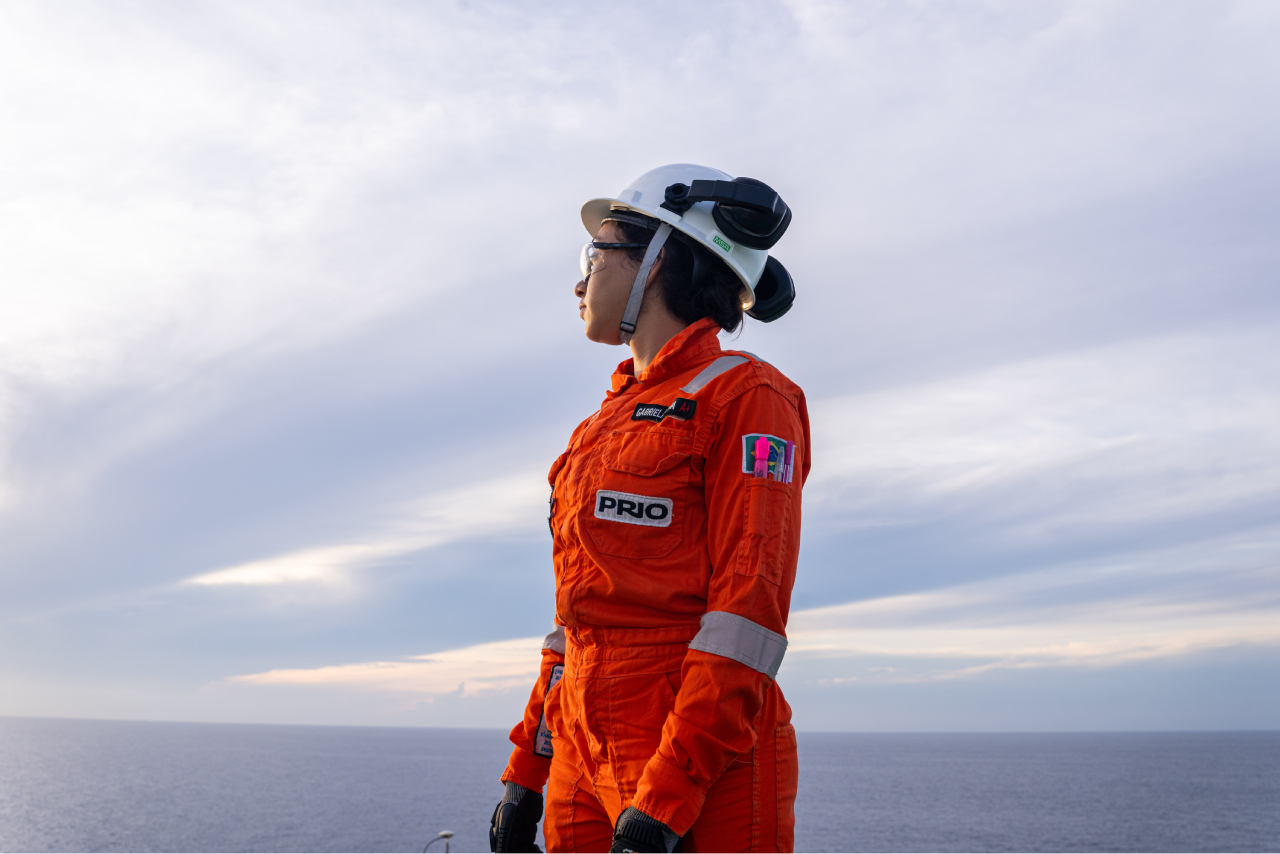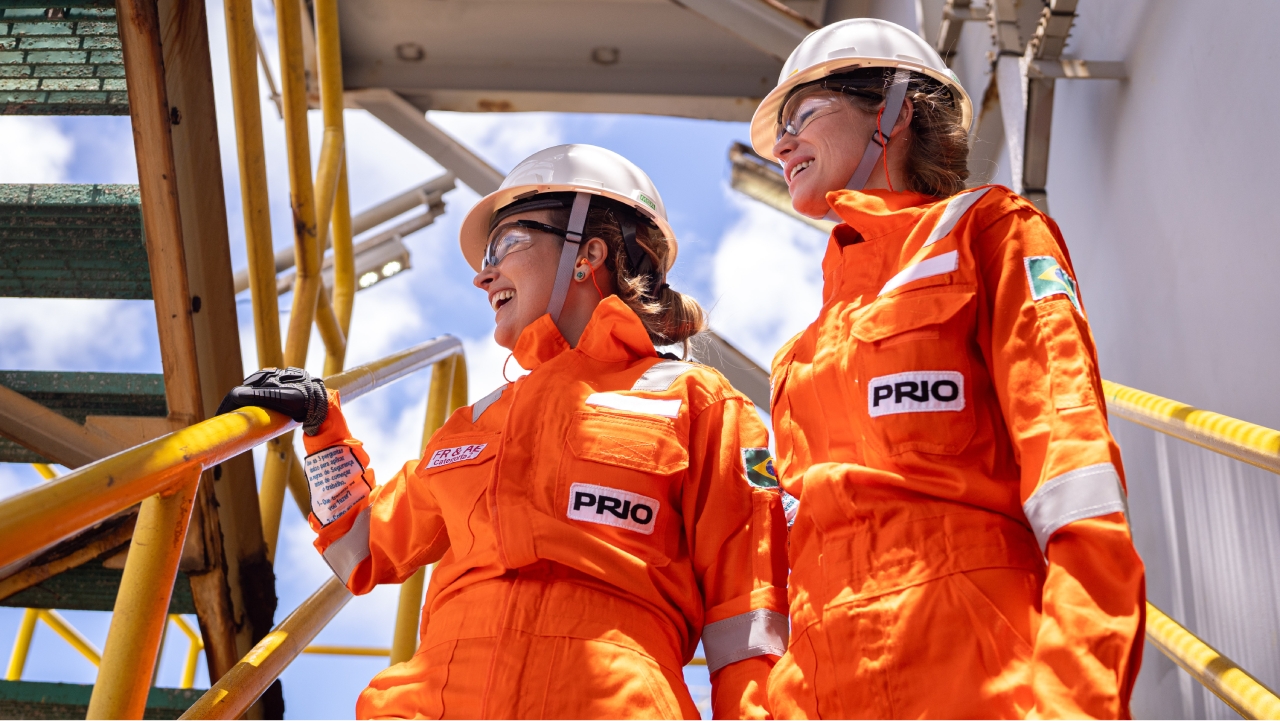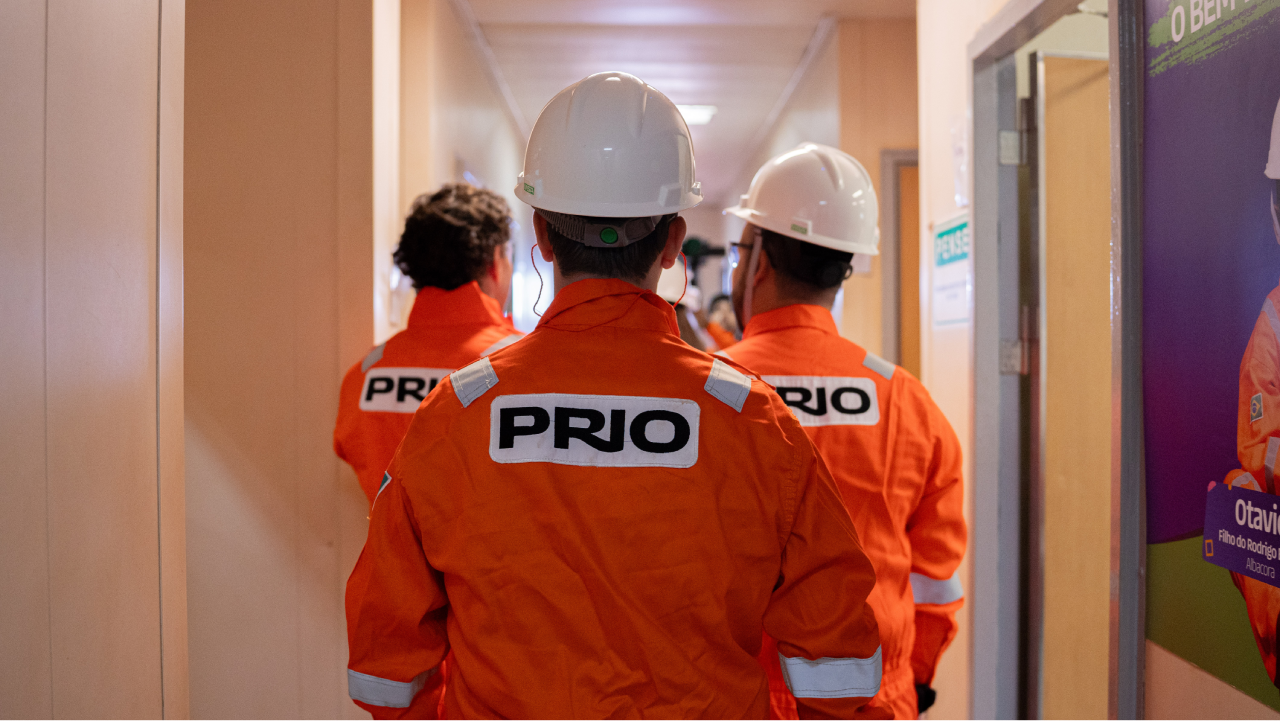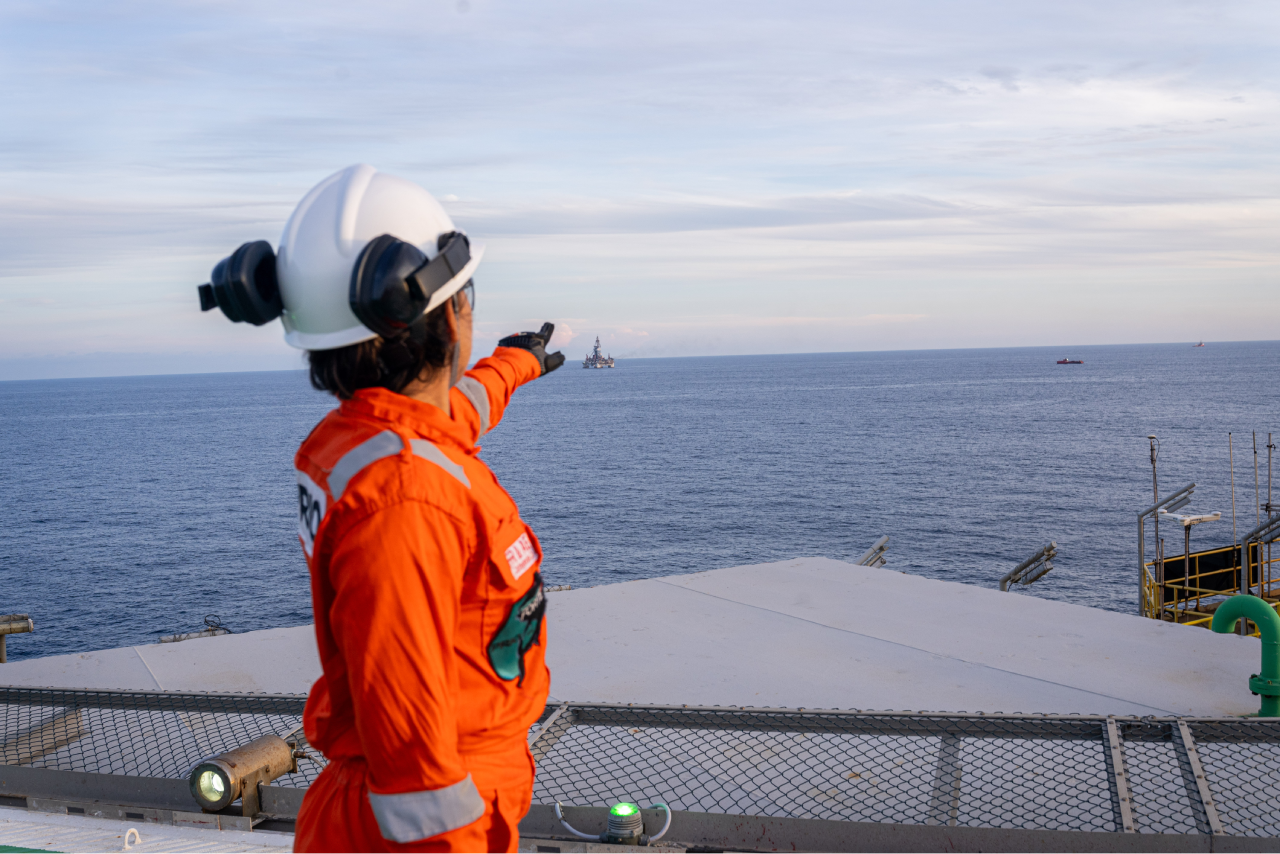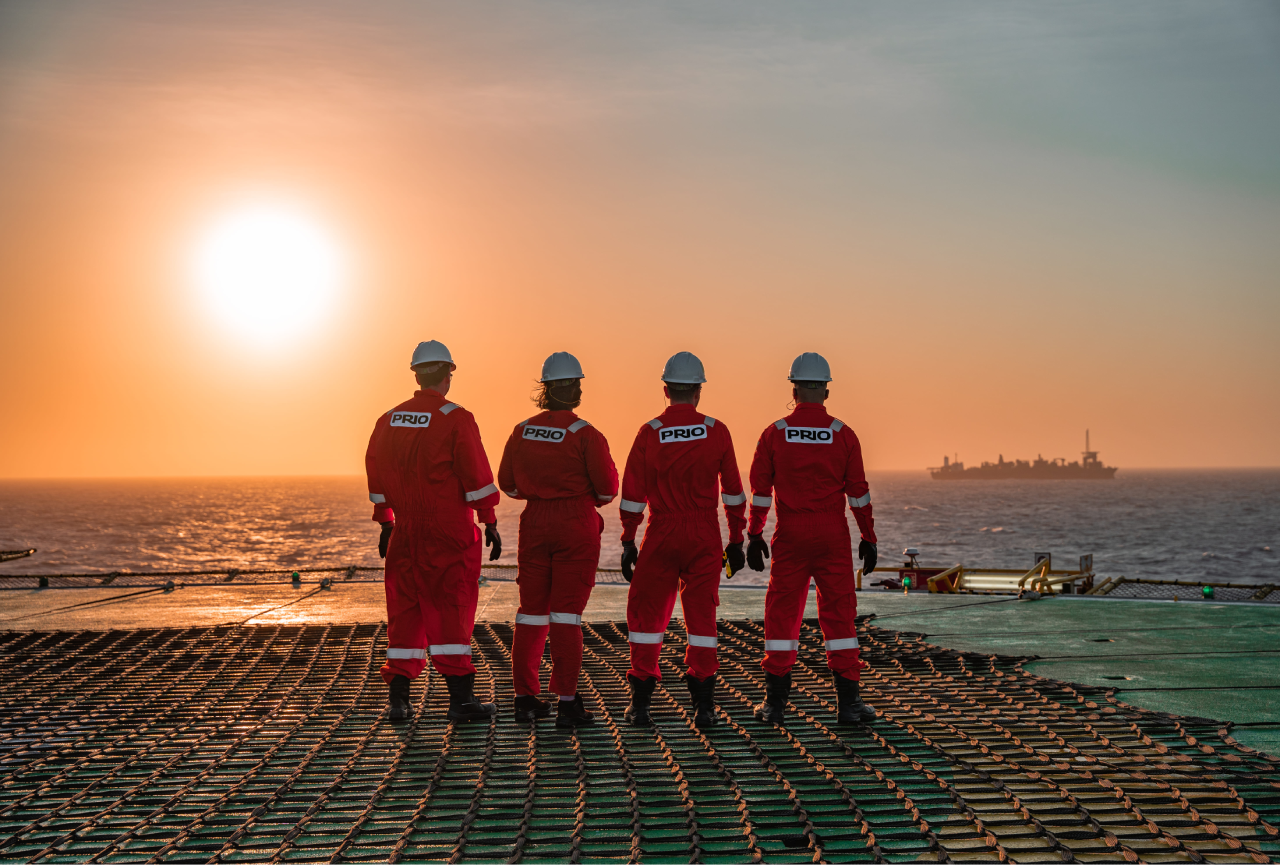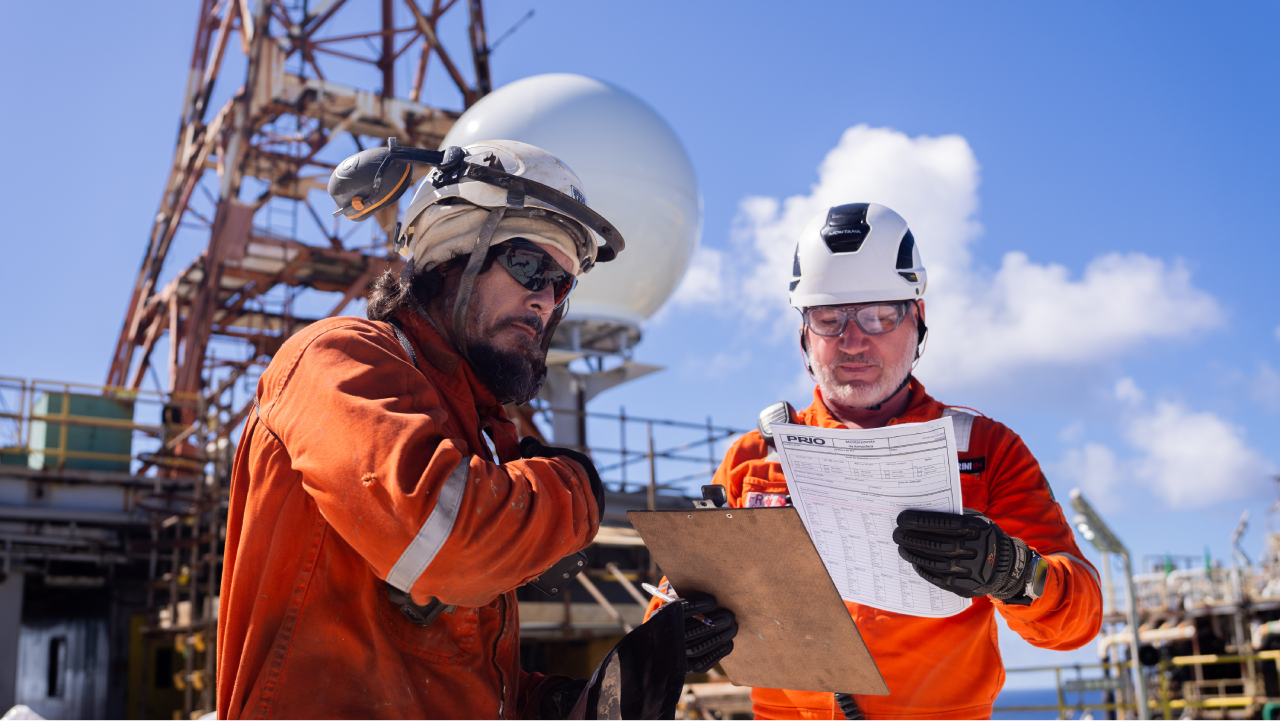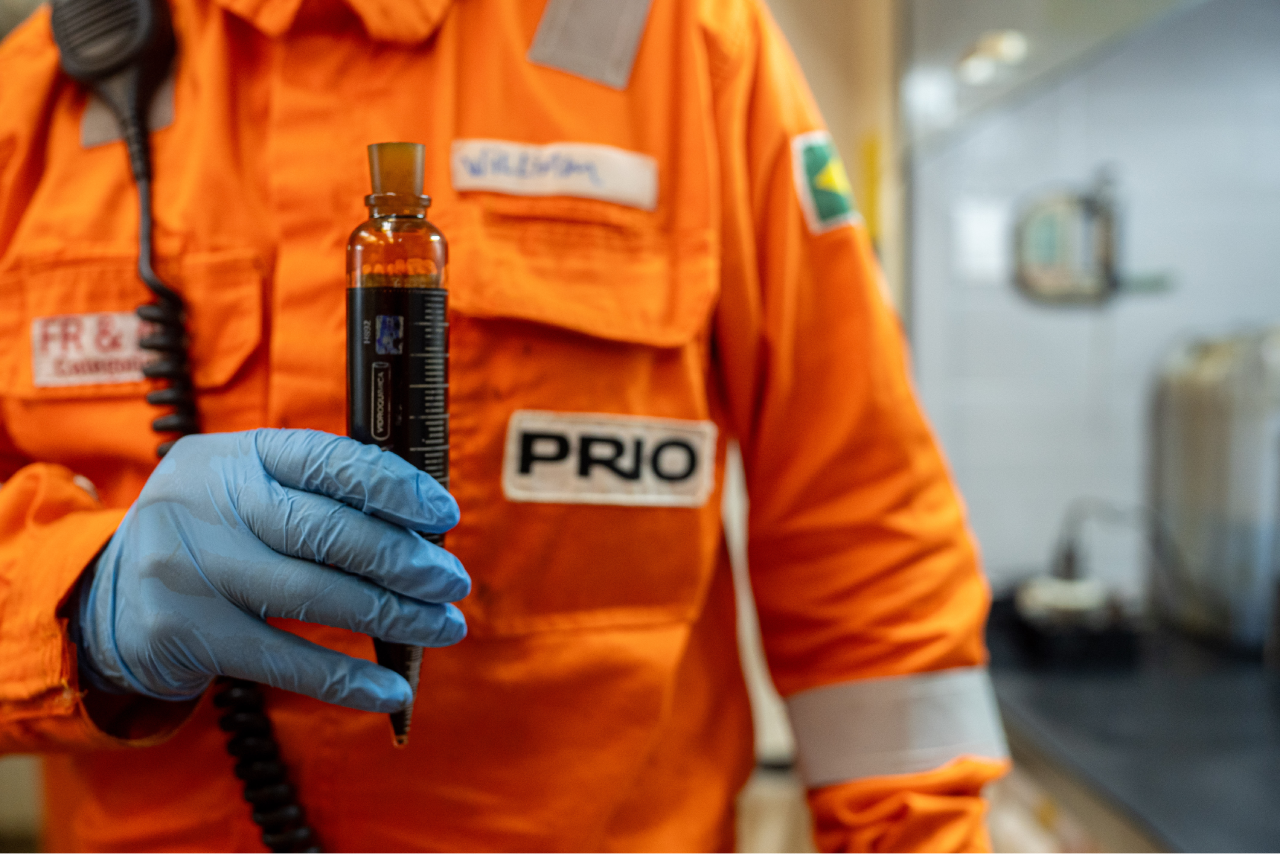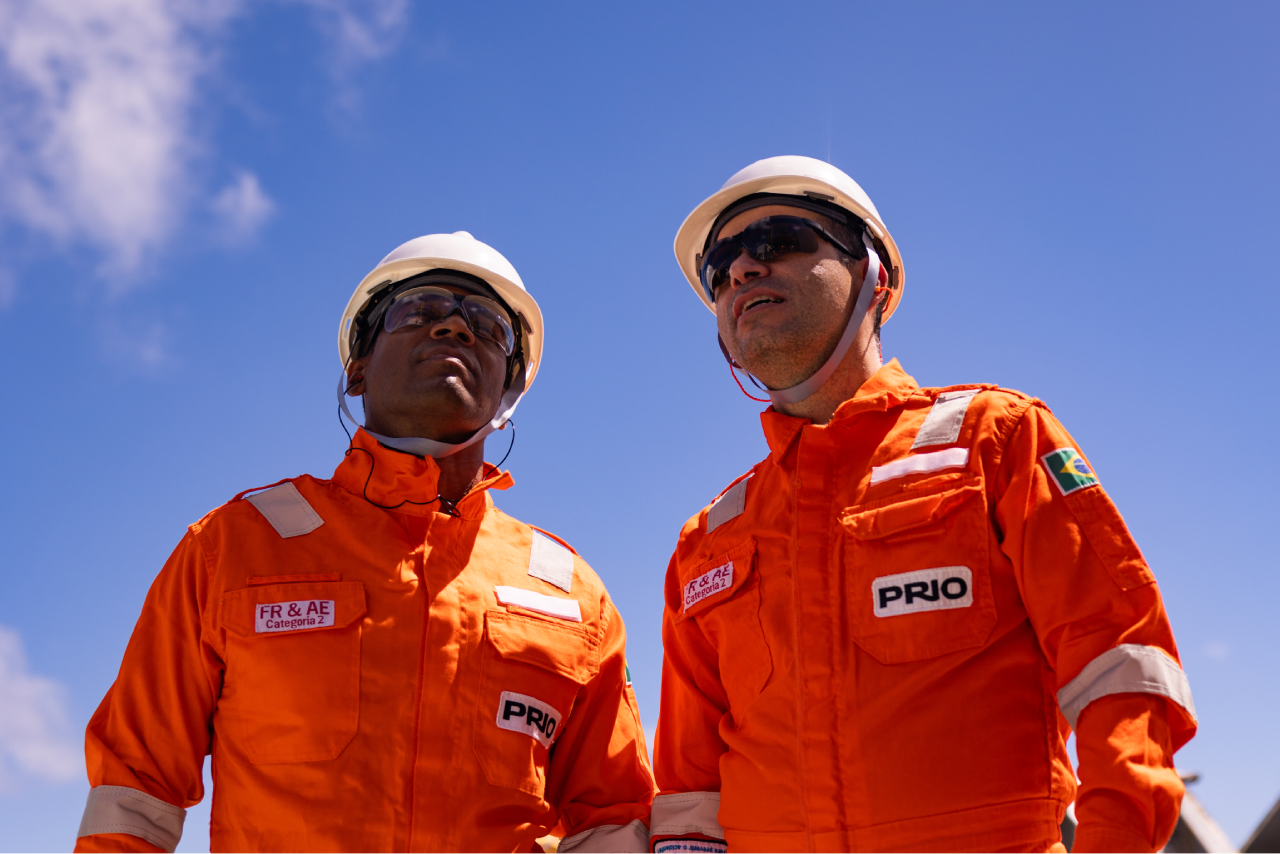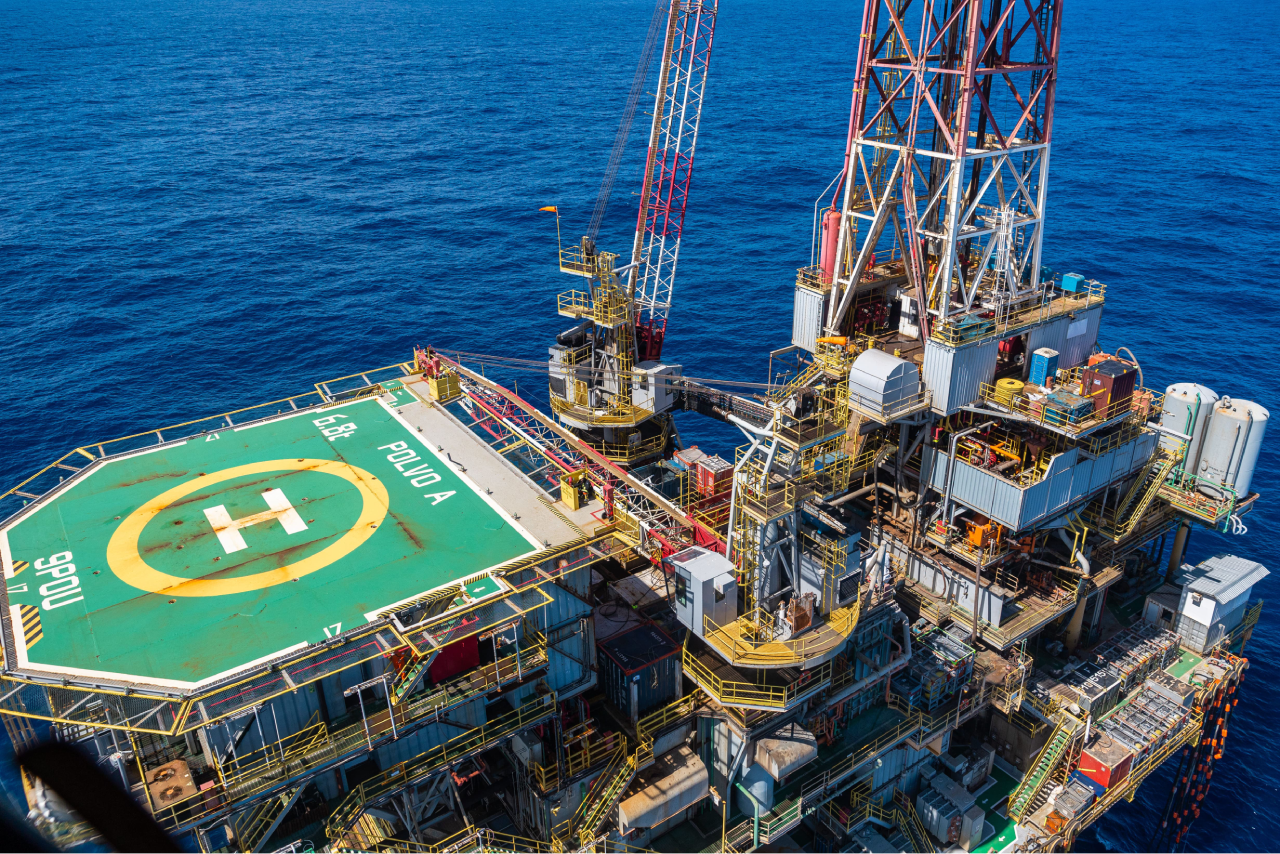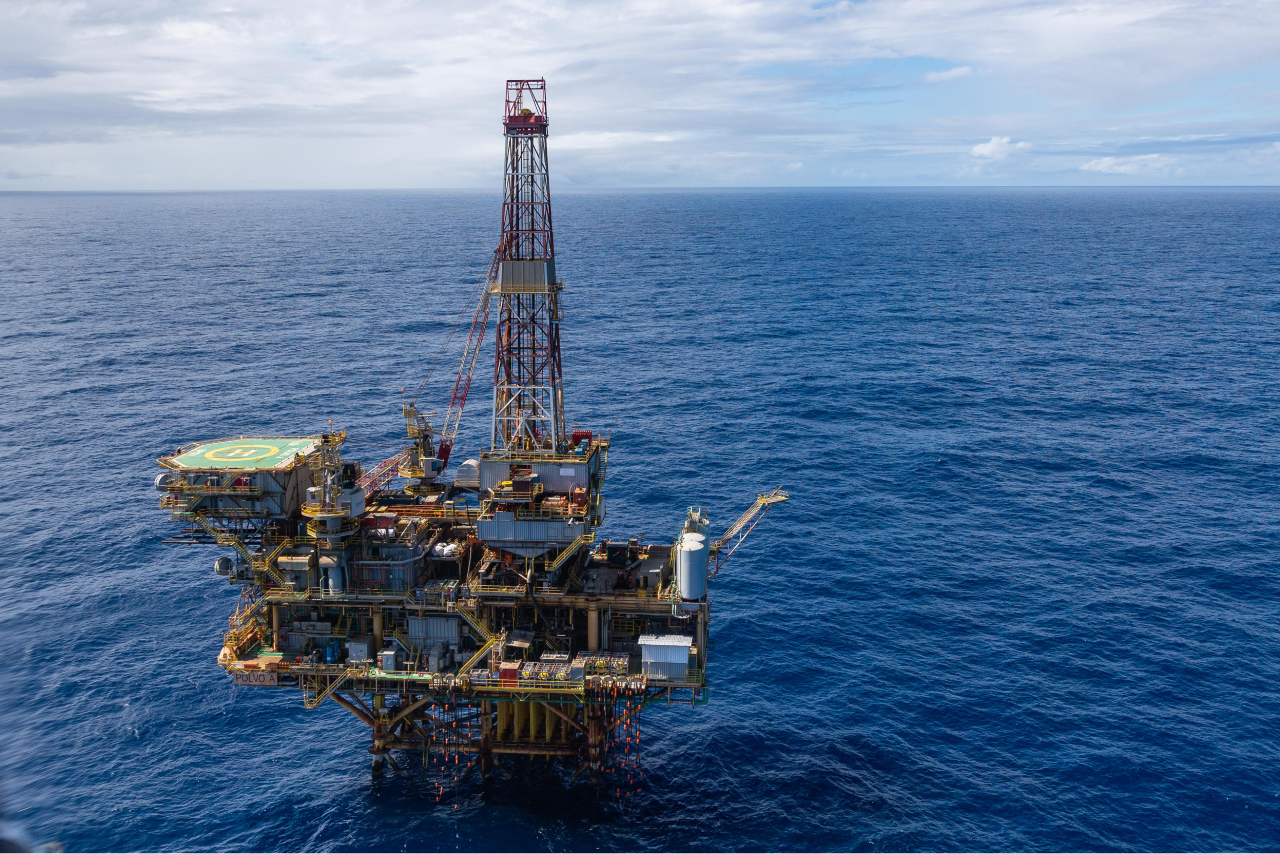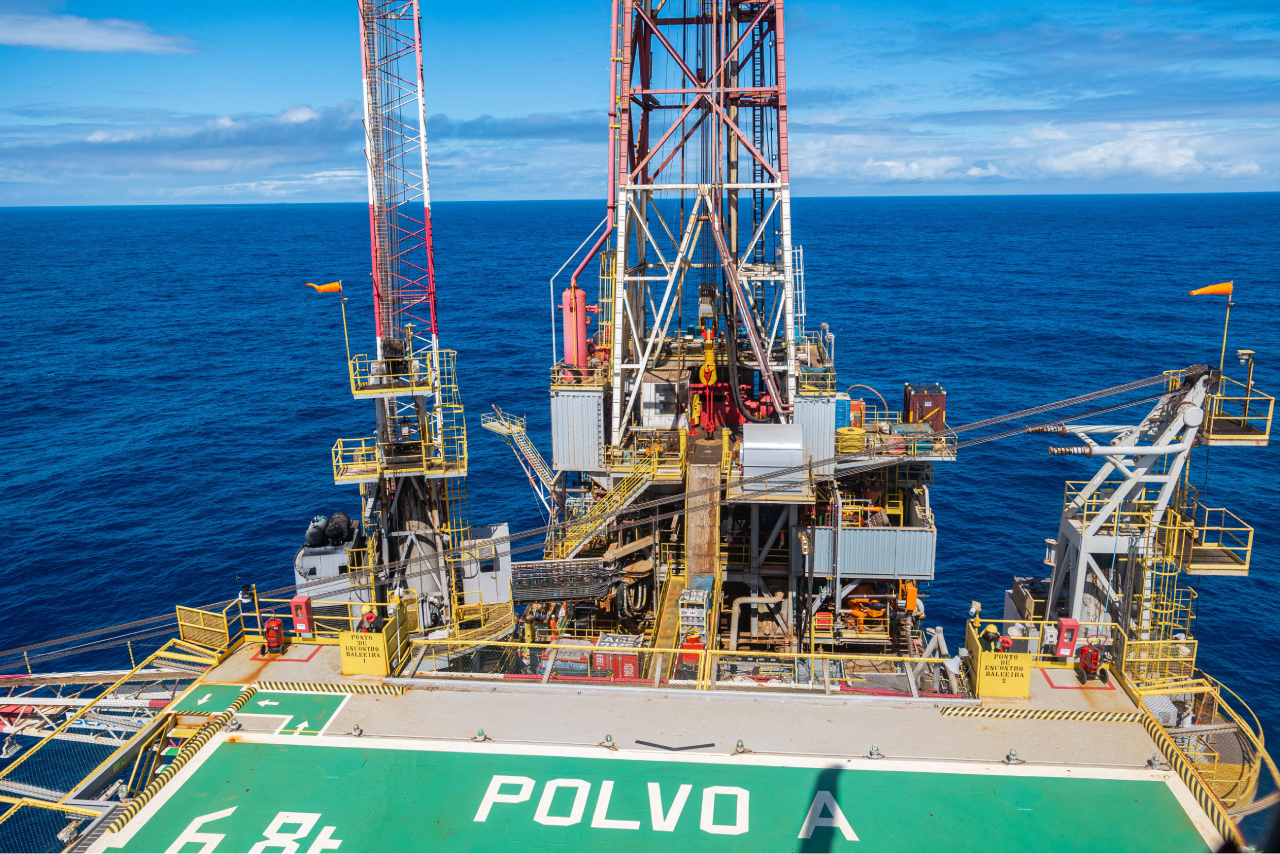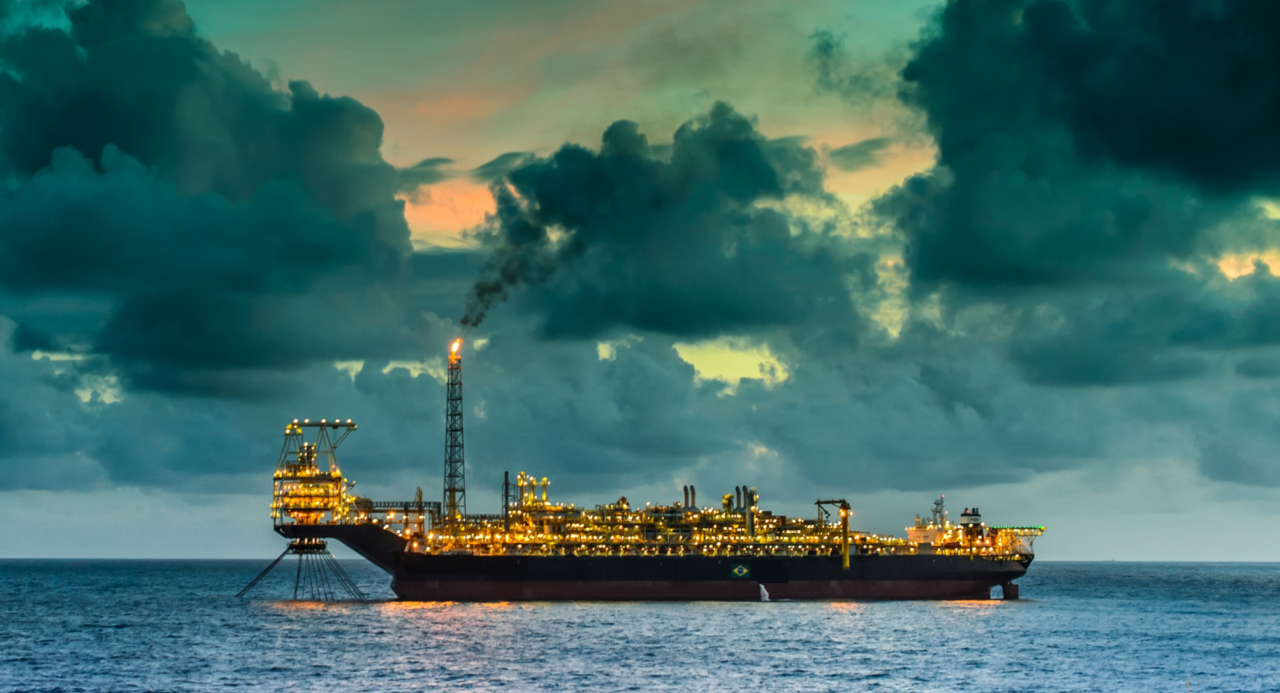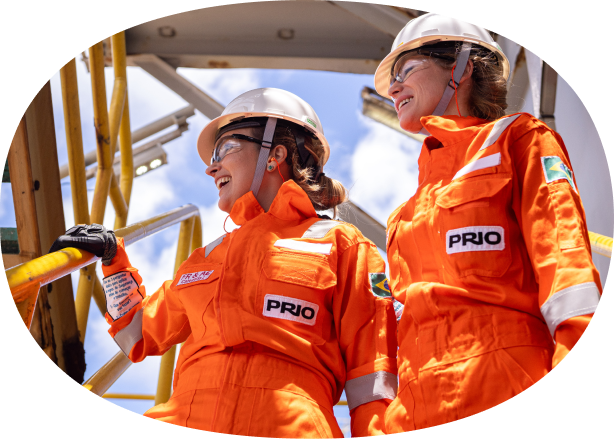

Events
Glossary
If you don't know any terms in the oil and gas sector, there's no need to be adrift. Just select the initial letter below and the main words will appear with their meanings.
Christmas Tree
Subsea equipment installed on the seabed for production control and flow direction. It is equipped with various valves for control
Shallow Waters
Water depth of 400 meters or less.
National Agency of Petroleum, Natural Gas and Biofuels (ANP)
Regulatory body of the petroleum and natural gas sector in Brazil.
Albacora Leste
Field of which 90% of production was acquired by PRIO in January 2023. Considered one of the most important fields in the Campos Basin since evidence of the pre-salt layer was discovered there in 2010.
Deep waters
Water depth from 401 to 1,500 meters.
API
A way to express the relative density of oil or its derivatives. The API scale, measured in degrees, varies inversely with relative density; that is, the higher the relative density, the lower the API degree. The API degree is higher when the oil is lighter. Oils with an API degree greater than 30 are considered light; between 22 and 30 degrees API are medium; below 22 degrees API are heavy; and with an API degree equal to or less than 10, they are extra-heavy oils. The higher the API degree, the greater the oil's market value.
AHTS (Anchor Handling Tug Supply)
Support tug vessel designed for towing operations and anchor handling through a special winch installed on its deck, featuring advanced maneuvering capabilities and a high bollard pull.
Ultra-deep waters
Water depth greater than 1,501 meters.
Basin
Depression of the Earth's crust where sedimentary rocks accumulate, which may contain oil and/or gas, whether associated or not.
Bbl/day
Barrels per day.
Oil barrel or bbl
A stock tank barrel, a standard measure of petroleum volume corresponding to about 159 liters.
Block(s)
Part(s) of a sedimentary basin, with a polygonal surface defined by the geographical coordinates of its vertices and undetermined depth, where exploration or production activities of petroleum and natural gas are developed.
Boe (barrel of oil equivalent)
Volume measure of gas converted to barrels of oil using a conversion factor (1,000 m³ of gas = 1 m³ of oil/condensate and 1 m³ of oil/condensate = 6.29 barrels).
Bbl/day
Barrels per day..
BOP (Blowout Preventer)
Also known as a blowout preventer, it is a safety device used on oil platforms to prevent blowouts during the drilling or production of oil wells. It consists of a set of valves and mechanical devices that are automatically or manually activated in case of emergency, preventing subsurface content from reaching the sea.
Bpd
Barrels per day.
Brent
Mixture of petroleum produced in the North Sea, originating from the Brent and Ninian petroleum systems, with an API degree of 39.4° and sulfur content of 0.34%.
Bunker
High-viscosity fuel, formulated from heavy (residual) fractions of petroleum with suitable diluents for combustion according to the Diesel cycle, used for fueling ships.
Cabeça de poço
Equipamento composto de carreteis (spools), válvulas e adaptadores conectados à parte terminal superior do poço, que garante vedação, controle de fluxo e sustentação mecânica dos equipamentos suspensos, tais como tubing e revestimentos.
Wellhead
Equipment composed of spools, valves, and adapters connected to the upper terminal part of the well, ensuring sealing, flow control, and mechanical support of suspended equipment, such as tubing and casings.
Mature fields
Fields that have already surpassed their production peak; that is, the volume of hydrocarbons extracted has reduced the internal energy of the reservoir, resulting in a natural decline in production.
Campos que já ultrapassaram seu pico de produção, ou seja, o volume de hidrocarbonetos extraído reduziu a energia interna do reservatório, acarretando declínio natural da produção.
Installed capacity
Design capacity of the unit, authorized by ANP.
Reserve certification
The certification and declaration of mineral resources and reserves is a process carried out by major companies in the sector to raise funds in stock exchanges or negotiate mineral projects with other companies. The document contains the estimated reserve of that field with data confirming the indicated value.
Oil/Gas Column
Continuous vertical section of rocks saturated with oil and/or natural gas, encompassing reservoir and non-reservoir rocks.
Well completion
Process of making the well ready for production.
Concession
State grant of the right to access a certain area for a specified period (usually through a competitive process), transferring certain rights from the country to the concessionary company for petroleum and natural gas exploration and production activities.
Condensate
Natural gas liquid obtained in the normal field separation process, which remains in the liquid phase under normal pressure and temperature conditions.
CO2e
Unit of measurement "CO₂ (equivalent)" used to standardize different greenhouse gases.
Depletion
Reservoir pressure drop that can be detected during a formation test or as a result of oil and/or gas production from the reservoir of an oil field.
Discovery
According to the Petroleum Law, it is a new finding of petroleum, natural gas, or other resources within the concession, confirmed by at least two evaluation methods (following ANP specifics). To be considered commercial, a discovery must present positive returns under market conditions for its development and production.
Downstream
Activities involving refining crude oil, natural gas treatment, transportation, and marketing/distribution of derivatives.
E&P
Exploration and Production.
EBITDA (Earnings before interest, taxes, depreciation & amortization expenses)
Earnings before interest, taxes, depreciation, and amortization expenses.
EIA/RIMA
Environmental Impact Study and its counterpart, the Environmental Impact Report. The study contains all information required to analyze potential impacts of a project, while the report aims to simplify the study's language to facilitate understanding for all stakeholders.
EOR
Enhanced Oil Recovery, a set of physical, thermal, and chemical techniques used to increase oil production in a reservoir beyond water and gas injection.
Relative emissions
Also known as emission rates, are the total emissions of an activity divided by a metric that best describes its main activity. For PRIO, for example, they are the total emissions divided by the total production.
Farm-in e farm-out
Process of partial or total acquisition of concession rights held by another company. In the same transaction, the company acquiring the concession rights is in a farm-in process, and the company selling them is in a farm-out.
Flare
System aimed at collecting and burning hydrocarbon vapors from petroleum equipment in a safe area. In operations, it resembles a chimney.
FOB (free on board)
Sale price of goods, plus all exporter expenses until its placement in the market.
Frade
Field acquired between 2019 and 2020 by PRIO, located in the Campos Basin.
FPSO
Floating Production Storage Offloading. Floating production, storage, and offloading unit built from a ship.
FPU (Floating Production Unit)
Floating oil production unit, built from a ship.
FSO (Floating, Storage & Offloading)
Floating storage and offloading unit, built from a ship.
FSV (Fast Supply Vessel)
High-speed ship for supplying cargo and passengers.
FR
Recovery factor, percentage of oil produced from a reservoir or field relative to its OOIP/VOIP.
Associated gas
Natural gas produced along with oil.
Gas lift
Artificial oil lifting method involving the injection of gas under pressure into the production column through valves near the producing interval. The gas mixes with the oil, reducing its average density, allowing reservoir pressure to lift the oil to the surface.
API gravity (°API)
A way to express the relative density of oil or its derivatives. The API scale varies inversely with relative density. Oils with higher API degrees are lighter and more valuable.
Genesis
Name of a multipurpose maritime support vessel used by PRIO in its operations.
Natural gas
Any hydrocarbon or mixture that remains gaseous under normal atmospheric conditions, extracted directly from petroleum or gas reservoirs, including wet, dry, residual, and rare gases.
GEE
Greenhouse gas.
Hydrocarbon (or HC)
Organic compound consisting only of carbon and hydrogen. Petroleum and natural gas are examples.
Hunter Queen
Sixth-generation submersible rig acquired by PRIO in 2022, operational in 2023. Capable of drilling in water depths up to 3,000 meters and wells up to 10,000 meters deep.
Ibama
Brazilian Institute of Environment and Renewable Natural Resources.
I love PRIO
PRIO's sponsorship platform investing in over 40 projects focusing on education, social development, culture, and sports.
Reserve Replacement Ratio (RRR)
Ratio between the volume of reserves added during the year and the total volume produced in the same year.
In situ
Volume originally contained in the reservoir before any petroleum or natural gas production.
Exploratory success rate
Number of exploratory wells with commercial oil and/or gas relative to the total drilled and evaluated in the current year.
Jacket
Support structure of a fixed platform extending from the foundation to above sea level, upon which the deck and modules are installed housing the process and utility units.
Deposit
Accumulation of petroleum or mineral deposit identified by research methods but not yet dimensioned or economically evaluated.
There is no content registered for the selected letter.
Water depth
Distance between the water surface and the seabed.
Bidding of exploratory blocks
Administrative procedure where ANP establishes minimum requirements for companies proposing to conduct petroleum and natural gas exploration and production activities via concession contracts.
Lines
Installations for fluid movement or control of subsea equipment, including flowlines, transfer pipelines, production lines, injection lines, service lines, umbilicals, and electrical cables.
Natural Gas Liquid (NGL)
Part of natural gas in the liquid phase under certain surface conditions, obtained in field separation processes or gas processing units.
LI | Installation License
Authorizes the installation and assembly of necessary equipment.
Lifting Cost
Average operational cost to extract each barrel of oil, excluding government royalties and special participation fees.
LP | Preliminary License
Licensing stage authorizing the conception and location of a project.
LO | Licença de Operação
Final license authorizing the execution of a specific activity.
MMm3/dia
Millions of cubic meters per day.
M&A
Merges & Acquisitions.
Net pay
Portion of the oil column including only reservoir rock intervals saturated with oil and/or gas, defined by porosity, permeability, and minimum hydrocarbon saturation.
OOIP
Original Oil in Place. Volume total de óleo presente no reservatório originalmente, similar ao VOIP.
Offshore
Located or operated at sea.
Fuel oil
Heavier fractions from petroleum distillation, widely used as industrial fuel.
Oil
Portion of petroleum in the liquid phase under reservoir and surface conditions.
Onshore
Located or operated on land
Operator
Company designated to conduct all operations in the concession area, per the contract between ANP and the concessionaire.
OSRV (Oil Spill Recovery Vessel)
Vessel equipped to combat oil spills, capable of operating in environments where evaporating oil produces natural gas.
Offloading
Set of operations for transporting oil produced by the maritime unit, starting with the shuttle tanker's approach and ending with its departure after cargo transfer.
Scheduled shutdown
Planned intervention to ensure safety and restore production capacity, impacting production for a few days.
PEI | Individual Emergency Plan
Company's planned actions to prevent and mitigate potential oil spills within operational units.
PEVO | Emergency Plan for Oil Spills at Sea
Company's planned actions to prevent and mitigate potential oil spills at sea.
R, D & I
Research, Development, and Innovation.
PEM (Minimum Exploratory Program)
Work program offered by oil companies for each block bid in ANP auctions, to be fulfilled during the Exploration Phase.
Logging
Method to evaluate the physical and chemical characteristics of geological layers and their fluids using appropriate sensors, with data processed by surface computers.
Petroleum
Any liquid hydrocarbons in their natural state, like crude oil and condensate.
Plataforma auto-elevável
Offshore platform with legs that can be positioned at different depths, elevating above the sea surface.
Semi-submersible platform or rig
Offshore platforms with one or more decks supported by submerged pontoons.
Polvo
Field in the Campos Basin acquired by PRIO in 2016, interconnected with Tubarão Martelo via subsea tieback.
Horizontal well
Well that penetrates reservoirs horizontally, allowing greater reservoir contact and higher flow rates than vertical wells.
Pre-Salt
Petroleum reserves beneath a deep salt layer, often exceeding depths of 7,000 meters, containing high-quality light oil.
Geological success probability (Pg)
Probability of discovering a commercial accumulation of oil and/or natural gas, estimated by multiplying the probabilities of various geological factors.
Prospect
Geological feature identified through studies that justifies exploratory drilling for oil and/or natural gas.
PSV (Platform Supply Vessel)
Supply ship for platforms, transporting equipment, liquids, and bulk solids.
There is no content registered for the selected letter.
Riser
Vertical portion of a flowline transporting oil/natural gas from the well to the platform.
Offshore Reaction
Free educational program sponsored by PRIO to prepare professionals for the offshore job market.
Potential Resources
Estimated volumes of oil in a prospect before drilling, potentially recoverable through future projects.
Contingent Resources
Estimated volumes in a discovered accumulation requiring further analysis or technology to be commercially viable.
Total Risked Potential Resources
Total potential resources multiplied by the probability of success.
Total Risked Potential Resources
Total potential resources multiplied by the probability of success.
Reserve
Discovered volumes of oil and/or natural gas commercially recoverable through development projects.
REPETRO
Special customs regime for export and import of goods for oil and gas exploration and production.
Probable reserves
Quantity of oil estimated to have a 50% chance of being achieved or exceeded.
Royalties
Financial compensation owed to the state by oil and natural gas producers in Brazil, distributed to various governmental bodies per legislation.
Proved Reserves
Oil and gas reserves estimated to be commercially recoverable with high certainty under current conditions.
2P Reserves
Sum of proved and probable reserves.
Spread Mooring
Arrangement of buoys anchored in place for ship berthing, typically for loading and unloading oil or natural gas.
Energy security
Continuous availability and affordability of energy services.
Seismic
Exploratory method using sound waves to map subsurface geological formations. Sound signals are emitted into subsurface rock layers. Energy reflects at interfaces between rock layers. Reflected signals are captured by receivers. Data are processed into images representing subsurface formations.
Ship-to-ship
Direct transfer of petroleum and derivatives between ships without onshore facilities.
2D Seismic
Data acquired along straight lines with large spacing, providing imprecise subsurface images.
3D Seismic
High-density data grids providing precise, three-dimensional subsurface images.
Rig
Equipment used for drilling.
Turbine
Engines converting fuel energy into mechanical energy. In FPSOs, they can use extracted natural gas.
Tieback
Subsea interconnection between fields/operations at a distance, requiring specialized know-how and materials.
Tubarão Martelo
Field in the Campos Basin acquired by PRIO in 2023, interconnected with Polvo via subsea tieback.
TAC – Term of Conduct Adjustment.
An agreement with the Public Prosecutor's Office to prevent illegal situations, repair collective damages, and avoid legal action. PRIO's ongoing TAC relates to the Frade field's 2011 environmental incident.
Reservoir tests
Wireline operation collecting rock plugs during drilling to obtain rock and fluid characteristics.
Formation test (FT)
Method to evaluate a reservoir's production capacity, characterizing fluids, pressures, and productivity.
Testemunhagem
Operação de amostragem contínua das rochas do poço, que são trazidas à superfície para a análise dos geólogos. Inúmeras informações a respeito das características da rocha são obtidas: tipo de rocha, porosidade, permeabilidade, indícios de hidrocarbonetos, fraturas, etc.
Turret
Structure with bearings allowing an FPSO to remain anchored and align with environmental conditions
Formation test (FT)
Method to evaluate a reservoir's production capacity, characterizing fluids, pressures, and productivity.
Extended Well Test (EWT)
Long-duration formation tests exceeding 72 hours during exploration to understand reservoir behavior.
Trading
Involves buying and selling oil contracts to profit from price fluctuations, using instruments like futures, options, and CFDs.
TLWP (Tension Leg Wellhead Plataform)
Floating platforms used in deep waters, fixed with tensioned cables, supporting wellheads with dry completion.
Total Gas Units (TGU)
Refere-se às atividades de Exploração, Desenvolvimento da Produção e Produção, englobando a busca, delimitação, desenvolvimento da produção e produção de petróleo e/ou gás natural. Usualmente as atividades e operações de Upstream incluem o transporte do óleo e/ou gás natural do poço produtor até um ponto de entrega, que pode ser um Navio Tanque junto à plataforma de produção ou oleoduto/gasoduto até um Terminal Downstream.
Upstream
Activities involving exploration, development, and production of oil and/or natural gas, including transportation to a delivery point.
VLCC
Largest class of tanker ships used for long-haul transport, each carrying about 2 million barrels of oil.
VOIP - Volume of Oil in Place
Total volume of oil originally present in the reservoir, similar to OOIP.
WHP (Well Head Plataform)
Platforms built from modular steel structures over jackets in shallow waters, supporting wellheads with dry completion.
WTI (West Texas Intermediate)
Oil with API gravity between 38 and 40 and approximately 0.3% sulfur, whose spot market price reflects barrels delivered in Cushing, Oklahoma, USA.
Wahoo
The first field to be fully developed by PRIO, viable due to tieback technology interconnecting operations via subsea pipelines. Oil from Wahoo will be transported 35 kilometers to the FPSO Valente/Frade, with operations expected to start in 2025.
There is no content registered for the selected letter.
There is no content registered for the selected letter.
There is no content registered for the selected letter.
There is no content registered for the selected letter.
1C, 2C, and 3C
Classifications for petroleum resource estimates, indicating increasing uncertainty from the most conservative (1C) to the most optimistic (3C).
1P or proved reserves
Quantity of oil that can be estimated with reasonable certainty to be commercially recoverable from known reservoirs under current conditions.
2P
Sum of proved and probable reserves, representing the best estimate scenario.
3P
Sum of proved, probable, and possible reserves, representing the high estimate scenario.






